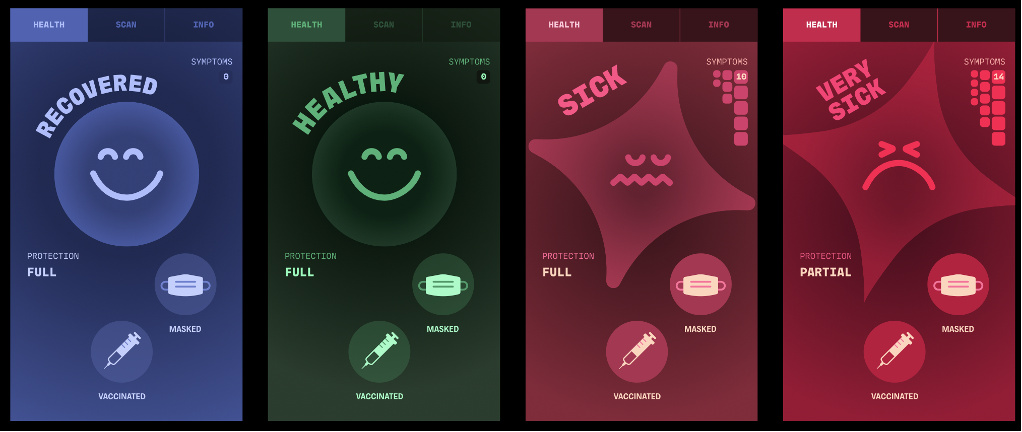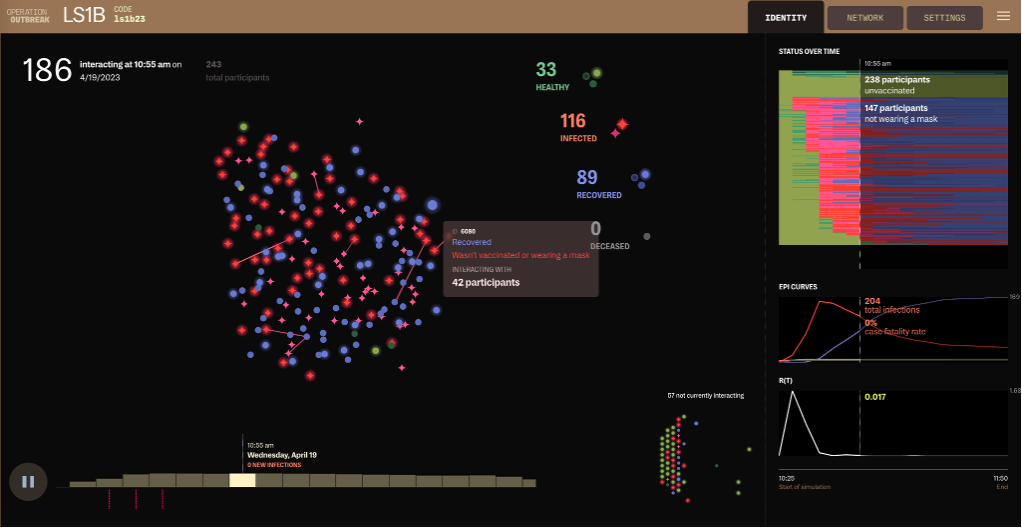Pandemic Preparedness
Disinformation and distrust of authorities hindered the U.S. response to the Covid-19 pandemic. Now, an app-based simulation designed by researchers at the Broad Institute is helping students prepare for future outbreaks.
Called Operation Outbreak, the app was created by the team of Pardis Sabeti, an infectious disease researcher at the Broad. Sabeti believes the app can equip students with a robust understanding of outbreaks—and how to thwart them. “Students today come to school wanting to change the world, and this is a way they can learn about the potential they can have,” she said.
To date, Operation Outbreak—generously funded by the Gordon and Betty Moore Foundation, The Rockefeller Foundation in collaboration with Dalberg Catalyst, and the Burroughs Wellcome Fund—has trained 6,000 students (ranging from sixth-grade to college) in 50 schools. Its origins date back to 2015, when Todd Brown, then a civics teacher at Sarasota Military Academy in Sarasota, Fla., wanted to nurture his seventh-grade students' interest in the Ebola virus spreading through West Africa. He emailed Sabeti and invited her to give a talk about Ebola to his students via Skype. After the talk, Brown conducted a low-tech pandemic simulation-game in which some students spread the “infection” by tagging each other with stickers.
Brown noticed how enthralled his students were by the lesson and approached Sabeti again to see what more he could do. They both agreed that the viral “infection” needed to be more realistic. At the time, Andrès Colubri—now an assistant professor at UMass Chan Medical School—who was then a postdoctoral researcher in the Sabeti Lab, was developing a Bluetooth app that would better mimic real pathogen transmission as a potential tool for combatting future outbreaks. After a few years of designing, iterating, and beta testing—with Brown leading the app’s testing in schools—the app-based program launched in 2018.
 Avatars in the Operation Outbreak mobile app.
Avatars in the Operation Outbreak mobile app.
All of which was before the Covid-19 pandemic. When Covid-19 struck in late 2019, the Operation Outbreak team wanted to expand Operation Outbreak’s capabilities. Enabled by the generosity of the Gordon and Betty Moore Foundation, they improved several of the app’s existing features, including parameters like “virulence” and “asymptomatic spread,” and a 15-part video series on outbreak science created in collaboration with Crash Course. “These simulations help students develop their critical thinking, teamwork, and decision-making skills,” said Tim Rogmans, founder of Sim Institute, a company that creates simulation games for education and global nonprofits.
The Operation Outbreak team also developed a visual dashboard in partnership with Fathom Information Design so students can explore their own anonymized outbreak data. In addition, the team honed the app’s proximity-sensing technology.
During the pandemic, the app was more than just a fun simulation. Two colleges—Colorado Mesa University and Brigham Young University—used it to understand how COVID-19 infections were spreading across their campuses.
 Visualization dashboard of post-simulation data.
Visualization dashboard of post-simulation data.
Udean Williams, a staffer at Don Bosco Cristo Rey High School (DBCR) in Takoma Park, Md., used Operation Outbreak to lead a simulation this past spring, packing 300 students into the school gym. What ensued surprised her. “The government collapsed and started charging for vaccines, which were supposed to be free. So the others created a black market. It was chaos,” she recalled. “Afterwards, teachers discussed the simulation in class to help students learn how outbreaks affect society, and how they can adapt and take action.”
DBCR is part of the national Cristo Rey Network of academically rigorous private high schools that serve students from families of limited economic means. An instructional coach at DBCR, Williams helps teachers improve their lesson plans, and in Operation Outbreak, she found a tool that both students and teachers benefited from.
But she wanted to tread carefully. The DBCR student body is 85 percent Latinx and 13 percent Black—populations disproportionately affected by Covid-19. And she knew that two students had sadly lost both parents to Covid-19. Before the simulation at DBCR, Williams worked with school counselors to ensure students were comfortable participating. The Operation Outbreak team is attuned to these sensitivities and has removed the skull icon to symbolize death in the app, replacing it with a screen that displays “Sim Over”. “We want students to have a positive and empowering experience, so we’re working closely with schools to understand students’ needs and acknowledge the climate surrounding outbreaks,” said Kian Sani, Operation Outbreak’s co-head, alongside Brown, Colubri, and Sabeti.
The team is also expanding Operation Outbreak’s scope, developing an online textbook covering topics ranging from biology to epidemiology and a video series as part of a full curriculum. “We want students to deeply understand the many fields critical to overcoming outbreaks together,” said Sabeti.
—Rubina Veerakone